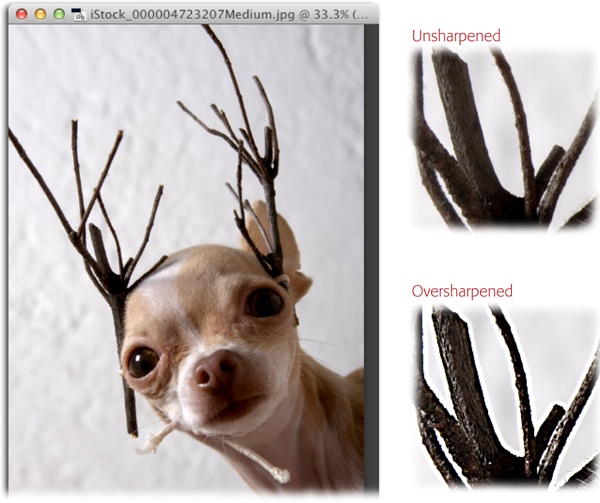What Is Sharpening?
Sharpening an image is similar to sharpening a kitchen knife. In both instances, you’re emphasizing edges. On a knife, it’s easy to identify the edge. In a digital image, it’s a little more challenging: The edges are where vastly different colored pixels meet (in other words, areas of high contrast), as shown in Figure 11-1.

Figure 11-1. Left: It’s easy to spot the edges in this image because its contrast is pretty high, especially between the antlers and the light background. Right: In this before-and-after closeup of the Chihuahua’s antlers—who does that to their pet?—see how the edges are emphasized after some overzealous sharpening (bottom)? The weird white glow around the antlers is the dreaded sharpening halo.
When you sharpen an image—whether in Photoshop, Camera Raw, or a darkroom—you exaggerate its edges by increasing their contrast: Where two colors meet, you make the light pixels a little lighter and the dark pixels a little darker. Though it may sound similar to increasing the overall contrast of the image, it’s not. When you run one of Photoshop’s sharpen filters, the program analyzes your image and increases the contrast only in areas it thinks are edges (and, as you’ll learn in a bit, you have some control over what it considers an edge).
Sharpening is a bit of an art: If you don’t sharpen enough (or at all), your image will look unnaturally soft and ...
Get Photoshop CC: The Missing Manual, 2nd Edition now with the O’Reilly learning platform.
O’Reilly members experience books, live events, courses curated by job role, and more from O’Reilly and nearly 200 top publishers.

